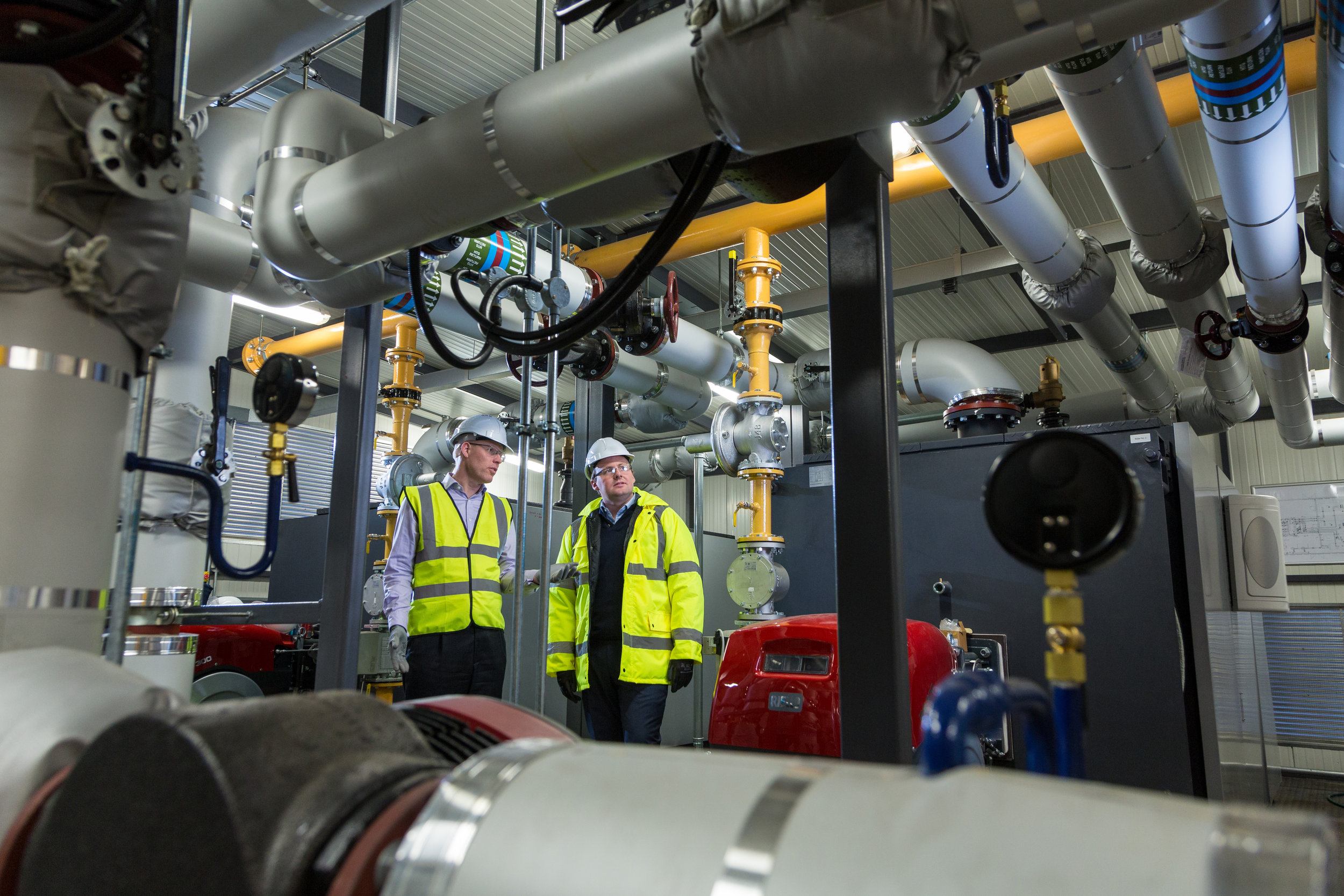
District heating transports heat directly into your home through a network of highly efficient underground pipes.
It removes the need for you to own, maintain, insure or replace a traditional boiler. The heat is available to you 24 hours a day, 7 days a week; you just pay for what you use to heat your home and water.
Traditional Gas Boilers
A property with an individual gas boiler receives gas from the national gas network which is used within the property to provide heating and hot water.
The cost of servicing the boiler, repairs, insurance and replacement of the boiler are separate additional costs on top of your gas bill.
District Heating
For a property on a district heating network, all of the costs associated with heating a home can be included in a single heat bill. This includes the cost of the fuel (e.g. gas, biomass), repair and maintenance, metering and billing.
Heat and hot water is generated in a local energy centre (a building that houses the main heating and hot water equipment) and is then transported through a network of pipes to all properties connected to the network.
We can generate and distribute heat from many different energy sources, including:
Gas boilers
Gas-fired Combined Heat and Power (CHP) systems
Biomass and biogas boilers
Biomethane
Fuel cells
Renewable fuels, solid recovered fuels, gasification & pyrolysis
Thanks to the economies of scale involved, our network is more efficient, more economic, easier and safer to operate, maintain and replace than the thousands of boilers it replaces. The network will supply heat with carbon emissions significantly lower than the equivalent heat supplied by individual gas boilers.*
In the future, we aim to increase our efficiency and improve our service even further. As technology changes, so we can adapt to accept new energy sources. We will determine the best combination of available sources, in order to meet the demand for heat efficiently, economically and with low carbon emissions.
We will report annually on our carbon emissions so you can see the progress we are making.
* Assuming a conservative Combined Heat and Power (CHP) electrical efficiency of 35% and heat efficiency of 40%.
In Your Home

The water in a district heating network is entirely separate from the water circulating in your home.
A Heat Interface Unit (HIU) in your home transfers heat from the network to your home’s hot water and heating systems.
The HIU looks much like a conventional gas boiler. You set the programmer controls for the system’s start/stop times and thermostat temperatures, just as you would with a traditional central heating system.
If the HIU goes wrong we can repair or replace it for you. Everything in your home beyond the HIU is your responsibility to look after – things like pipes, radiators, thermostatic valves, showers or underfloor heating. While we are not responsible for these elements, we can put you in touch with a contractor who is competent and capable with these systems. Please ask us for more details.
Our system is just as reliable as the other utilities you are used to such as gas, electricity and water.
In fact because our district heating system is in a compact area, constantly monitored and under our complete control, any problems should be resolved more quickly.
The equipment is better engineered, benefits from economies of scale, is larger, more robust, longer lasting, more reliable and efficient than a domestic sized heating plant and is professionally operated, remotely monitored, serviced and maintained by skilled engineering staff that are based on-site.
The district heating system is designed to accept multiple sources of heat supply, has excess heat capacity, permanent standby boilers, and thermal storage. All of this ensures that you should have a lower breakdown risk than if you had a conventional gas boiler.
About With Energy
With Energy is a new energy company, set up to provide low-cost heat, power, operations, maintenance and customer services to new residential developments across the UK.






